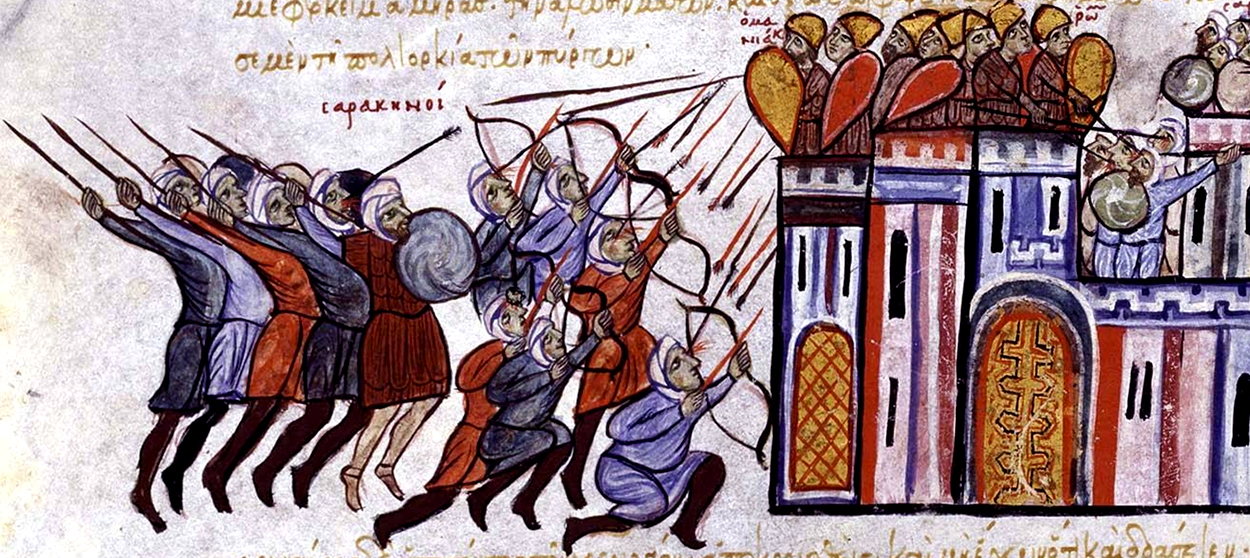Who needs Game of Thrones when we have Byzantine history?
It is a story of "the intrigues of priests, eunuchs, women, of poisonings, of conspiracies, of uniform ingratitude, of perpetual fratricides"


I have no idea why anyone bothers watching Game of Thrones, which began its eighth and final season on HBO four weeks ago amid record viewing figures. I say this not simply because I think the show is depraved (though as a former viewer, I do). It is because if I wanted to spend hundreds of hours of my life absorbed in the mostly unedifying history of a kingdom and its people — some of them proud and beautiful, some others vicious, most of them worldly, a very small number rather saintly — I would just read more about Byzantium.
I am afraid to say that the Eastern Empire, the thousand-year sequel to ancient Rome that at its height spanned the entire Mediterranean world from the coast of Spain to the Levant, has not always gotten good press. In his History of European Morals, the Anglo-Irish historian W.E.H. Lecky dismissed Byzantium as "the most thoroughly base and despicable form that civilization has yet assumed." "There has been no other enduring civilization destitute of all the forms and elements of greatness," he said. "The history of the Empire is a monotonous story of the intrigues of priests, eunuchs, women, of poisonings, of conspiracies, of uniform ingratitude, of perpetual fratricides."
It begins, like all the best stories, as a legend. We do not even know when the great city came into being or the origin of that beautiful name. It is said that her founder was King Byzas, the ruler of Megara, a lord who came thither across the Aegean nearly 700 years before the birth of Christ. In the next eight centuries it would change hands many times, becoming in turn a Persian province, a Greek city, and then a Roman one.
The Week
Escape your echo chamber. Get the facts behind the news, plus analysis from multiple perspectives.

Sign up for The Week's Free Newsletters
From our morning news briefing to a weekly Good News Newsletter, get the best of The Week delivered directly to your inbox.
From our morning news briefing to a weekly Good News Newsletter, get the best of The Week delivered directly to your inbox.
In A.D. 330 Constantine the Great moved his capital from the Eternal City to the place where the Golden Horn meets the Bosphorus. Here civilization would flourish for more than a millennium, long after the West was given over to barbarism and Rome herself had become a swampy backwater of petty princes both lay and religious. Streets were lit with oil-burning lamps. Ladies ate with forks and gentlemen fought wars with gunpowder. Persons of all races lived together and numberless tongues were spoken. Women passed as men and were declared saints. Emperors were deposed and sometimes restored only to be deposed again, like Justinian II, who reigned from 685 until his nose was cut off 10 years later (hence his cognomen Rhinometus, "the slit-nosed"). After being exiled, he married the sister of a great khan and crossed the Black Sea in a fishing vessel. There he raised an army of Bulgars and retook the throne in 705, whereupon he began a series of wars against his former allies. His head was finally cut off in 711 and sent as a gift to a general he had dismissed. This is the golden civilization that would inspire the mystical ecstasy of poets:
O sages standing in God's holy fireAs in the gold mosaic of a wall,Come from the holy fire, perne in a gyre,And be the singing-masters of my soul.Consume my heart away; sick with desireAnd fastened to a dying animalIt knows not what it is; and gather meInto the artifice of eternity. [W.B. Yeats, "Sailing to Byzantium"]The organic body sang together;dialects of the world sprang in Byzantium;back they rang to sing in Byzantium;the streets repeat the sound of the Throne. [Charles Williams, Taliessin through Logres]
It would be tempting to take Charles Williams at his word and see in Byzantium the complete realization of Christian ideals of cooperation between altar and throne. But Byzantine religion was at once more ethereal and spiritualized than that of the West, with its tough-minded agriculturalist monks and logic-chopping schoolmen, and more venal. The princes of the Latin Church fought for and often secured the acquiescence of the temporal power; in the East, while the monks of Mount Athos gazed at what they insisted was the uncreated light of God Himself, the patriarchs in the holy city groveled before their emperors, who made themselves the ultimate arbiters of Church doctrine. In the twilight of the empire in the early 15th century, the Orthodox representatives at the Council of Florence were instructed by their sovereign — who needed troops and money — to affirm Catholic teaching on the filioque, the form of the consecration at Mass, purgatory, and the supremacy of the Roman pontiff. After the fall of Constantinople in 1453, the new Ottoman rulers, who understood the danger of Orthodox communion with Rome, encouraged those churchmen who wished to renege. This schism has persisted until the present day.
One of the most agreeable things about Byzantine civilization is the role played by women — and not only those of high station. It is impossible to imagine in the history of what we now think of as "Western Europe" anything like the extraordinary career of the Empress Theodora. Born to a bear baiter and an acrobat and orphaned at the age of 5, she too became a performer of sorts. Some of these entertainments sound rather bizarre, indeed pornographic — one involved her lying naked while slaves covered her body with barley, which was then consumed by geese. After some years abroad, as a young woman she returned to Constantinople, where Justinian I changed the laws governing the marriage of actresses and wed her. As empress Theodora was renowned for her charity — among other things she took a great interest in improving the lives of prostitutes and other women of low standing — and her courage. During a revolt in 532, her husband was on the verge of fleeing the palace when she accosted him. "Every man who is born into the light of day must sooner or later die; and how could an Emperor ever allow himself to be a fugitive?" she said. "May I myself never willingly shed my imperial robes, nor see the day when I am not addressed by my title. If you, my Lord, wish to save your skin, you will have no difficulty doing so. As for me, I stand by the ancient saying: The purple is the noblest winding-sheet."
Some years ago a very odd Soviet mathematician proposed a theory that has become known as "New Chronology." According to Dr. Anatoly Fomenko, who remains a member of the Russian Academy of Natural Sciences, everything we know about historical dating is false, the result of a plot or series of plots concocted by (who else?) the Catholic Church. The pyramids, for example, were built in the Middle Ages, and King Solomon, who lived no longer than half a millennium ago, is identical to Suleiman the Magnificent. If the good professor's speculations were somehow proven correct, I would be forced to change my mind about a great many things.
A free daily email with the biggest news stories of the day – and the best features from TheWeek.com
Byzantium would not be among them. If Basil II the Bulgar-Slayer and Halil Pasha and the hesychasts were shown to be as fantastical as Aegon I Targaryen and Lord Spider and the Sparrows of King's Landing, I would simply beg, like Yeats, to be gathered up into the artifice of eternity.
Matthew Walther is a national correspondent at The Week. His work has also appeared in First Things, The Spectator of London, The Catholic Herald, National Review, and other publications. He is currently writing a biography of the Rev. Montague Summers. He is also a Robert Novak Journalism Fellow.
-
 7 bars with comforting cocktails and great hospitality
7 bars with comforting cocktails and great hospitalitythe week recommends Winter is a fine time for going out and drinking up
-
 7 recipes that meet you wherever you are during winter
7 recipes that meet you wherever you are during winterthe week recommends Low-key January and decadent holiday eating are all accounted for
-
 Nine best TV shows of the year
Nine best TV shows of the yearThe Week Recommends From Adolescence to Amandaland
